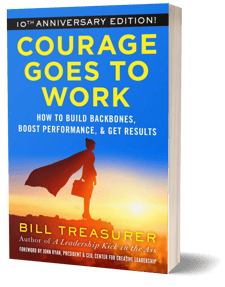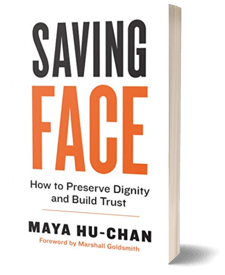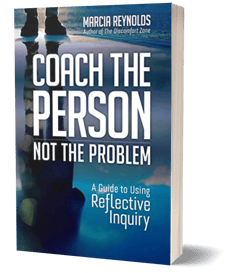In May 2019, the World Health Organization (WHO) finally listed burnout as a global occupational hazard. Those of us in the leadership and human resource field wondered what took them so long. After all, 30 years ago, Dr. Herbert Freudenberger clearly defined burnout as "exhausting one's physical and mental resources by excessively striving to reach some unrealistic expectation imposed by one's self or by society."
It hasn't changed since then, and the flames have only gotten bigger. Today, we now see a correlation between organizational culture, leadership styles, work expectations, and the growing reports of burnout across all sectors of the economy.
One more piece has also been added: the pandemic lockdown has created remote workforces, economic uncertainty, and rising awareness of social inequity and injustice. It's a new world that will require individual awareness and effort, along with leaders willing to abandon outmoded behaviors, systems, and processes. And for all of us, it's going to require clarity of focus, courage, and compassion.
Fight Burnout With A Collaborative Vision
 1) Collaborate to craft a shared, compelling vision of what the organization can move toward in the next few years.
1) Collaborate to craft a shared, compelling vision of what the organization can move toward in the next few years.
This is not just sitting in a room and dreaming. Rather it involves ALL stakeholders and honestly looks at the current reality with all its uncertainty. Without a vision, an organization treads water. Jesse Lyn Stoner and Ken Blanchard have written an easy-to-follow book, Full Steam Ahead, that everyone can read without requiring hours of time and a dictionary!
It also lays out a clear process that is equally suited for virtual conversations. Now, as COVID sends team members into remote worksites and uncertainty abounds, creating even a short-term collaborative vision is powerful and positive.
When one can't see the way out of a forest, identifying a path through the "woods" is an act of hope.
Say Yes to New Ideas Instead of "No," or "But…"
 2) Seek and reward courage in employees who take the initiative to try something "new" in this strange, disruptive environment.
2) Seek and reward courage in employees who take the initiative to try something "new" in this strange, disruptive environment.
No one person holds all the answers in these complex times. Encourage employees to speak up about ways to save money, satisfy a customer base, or have a micro-innovation. For some leaders, the impulse will be to jump in and say "no" or why something won't work. Danger! If you are concerned, ask for a small trial balloon first.
Bill Treasurer, in his book Courage Goes To Work, tackles fear in an organization by offering three types of courage: Try Courage, which means to take the initiative; Trust Courage, following the lead of others; and Tell Courage, being honest and assertive with coworkers and bosses.
Following these principles will help you have the courage to say "yes," to ideas!
Less Burnout Occurs When Leaders Communicate Respectfully
 3) Develop a communication skill that builds trust and preserves dignity.
3) Develop a communication skill that builds trust and preserves dignity.
Nothing will burn out employees and create an atmosphere of fear and intimidation more than a leadership style that demeans, degrades, and discounts employees. Sadly, we see this type of communication at the highest levels of our nation: name-calling, bullying, degrading, and creating such an unpleasant environment that people leave.
The opposite of this abrasive, arrogant style is what Maya Hu-Chan calls Saving Face. "Face" is a concept that transcends far beyond its origins in China. It is consciously speaking (and listening) in a way that honors or respects the individual—even if we disagree. It means showing compassion and caring while also being civil and intentional so as to create a place of psychological safety. The leader practices "straight talk," saying what needs to be said at the right time and place. The opposite is blunt talk, which runs rough-shod over the individual or team.
Even as I write this, you can feel the tension, anger, and burnout begin to rise!
See Your Employees In Their Full Humanity
 4) Coach the Person, Not the Problem
4) Coach the Person, Not the Problem
Yes, that is the title of a very helpful book that should be on everyone's desk or nightstand. Employees can experience burnout when they face issues they don't know how to solve: from unrealistic expectations established by the organization to home challenges with blending work and a family, to conflicts with other employees and more. With so many workers now working from home, more challenges abound. Not everyone will have a good workspace or a good option for homeschooling children. The regular "break" that occurs during a commute is gone. Coaching the person, not the problem, is more important than ever.
Dr. Marcia Reynolds offers a guide to reflective inquiry: a way of mirroring back to someone what is heard and said. With reflective inquiry, the individual can resolve the dilemma independently, instead of being ordered into a specific solution. Of course, this does not preclude the potential need for true consultative help. However, in this new world, if a leader can practice empathetic listening and reflection, an employee is more apt to feel empowered.
To feel "heard and understood" is a valuable gift. The burnout of helplessness moves to hopeful.
Know Your Triggers and Build Systems to Help Each Other
 5) Build resilience skills to refuel, recharge, and reclaim what matters.
5) Build resilience skills to refuel, recharge, and reclaim what matters.
Leaders can grant their team opportunities to learn and work together collectively on issues related to burnout. In Burnout to Breakthrough, readers are guided through a process that looks at personal and organizational triggers that might lead to burnout. In self-selected, small groups, employees can share personal insights and offer observations and ideas to help each other. Note that psychological safety, trust, and empathy must be present for this type of shared learning to work. If these conditions are present, the team's cohesion can grow, and enthusiasm for the work and each other can multiply.
One final thought: I'll never forget a client who shook her head sadly and said, "I feel burned out because my work is not regarded as 'worthy.'" All of us, from the CEO to the security guard, want and need to feel that what we do matters. When a leader takes the time to acknowledge individuals, note the value of contributions, and express gratitude, we move from burned out to fired up.



